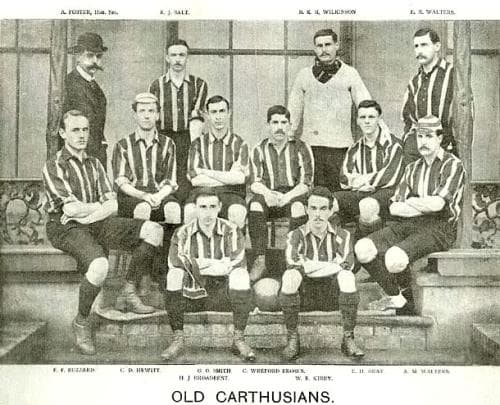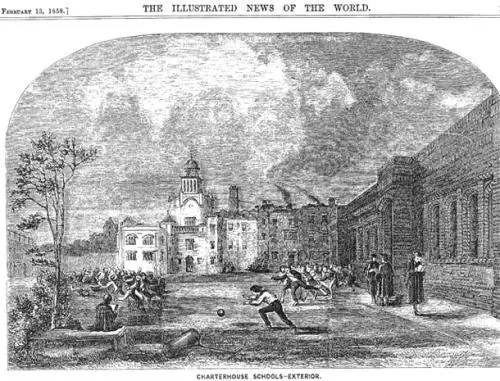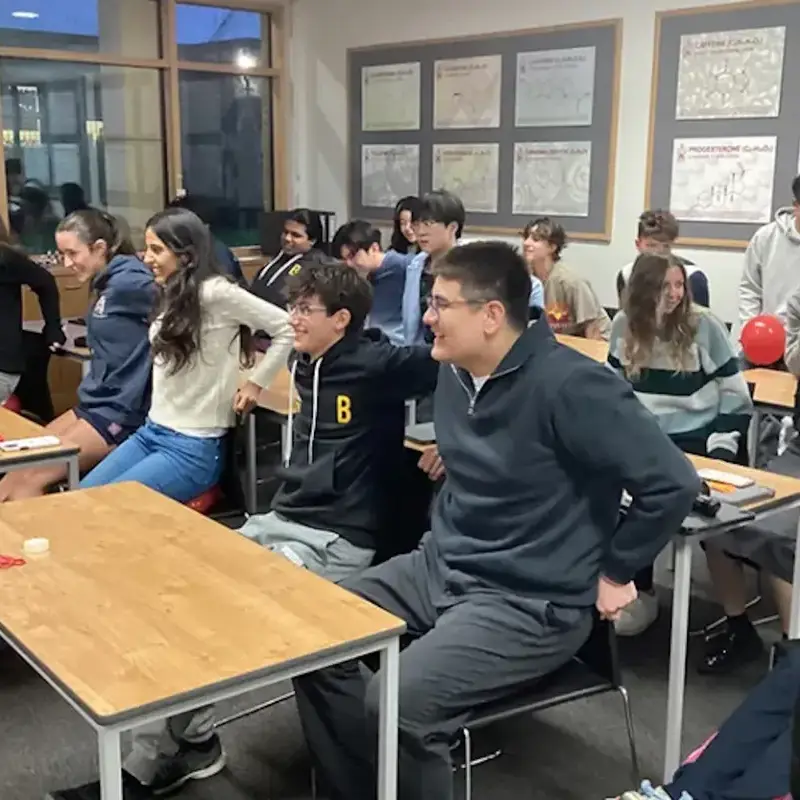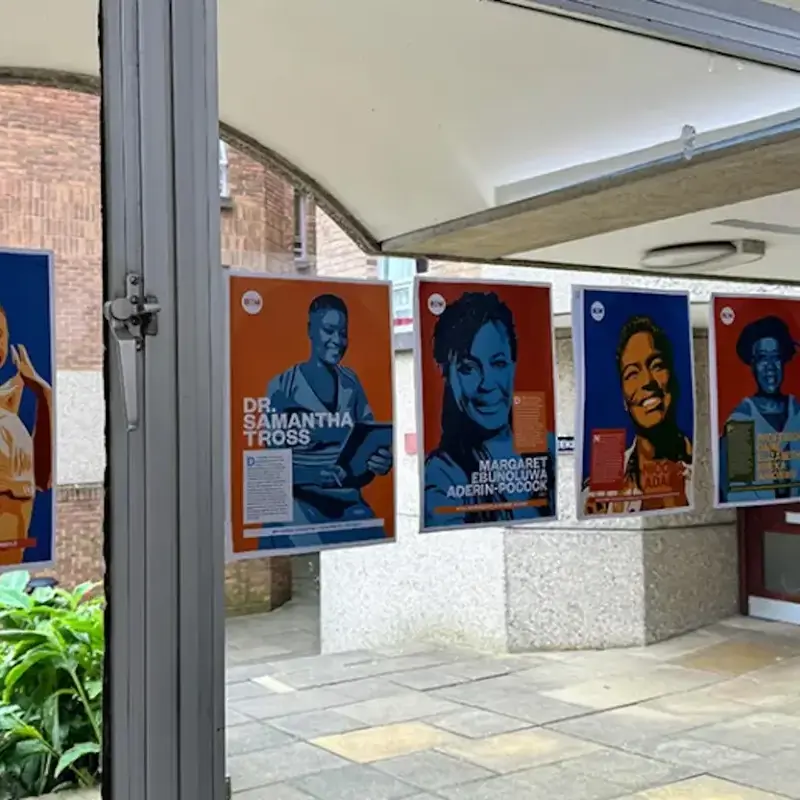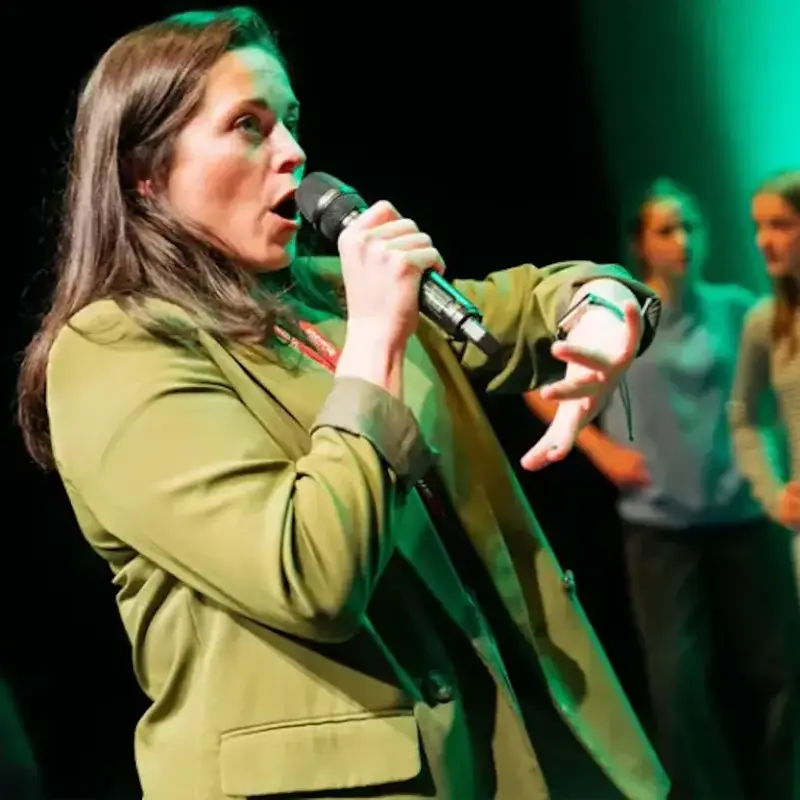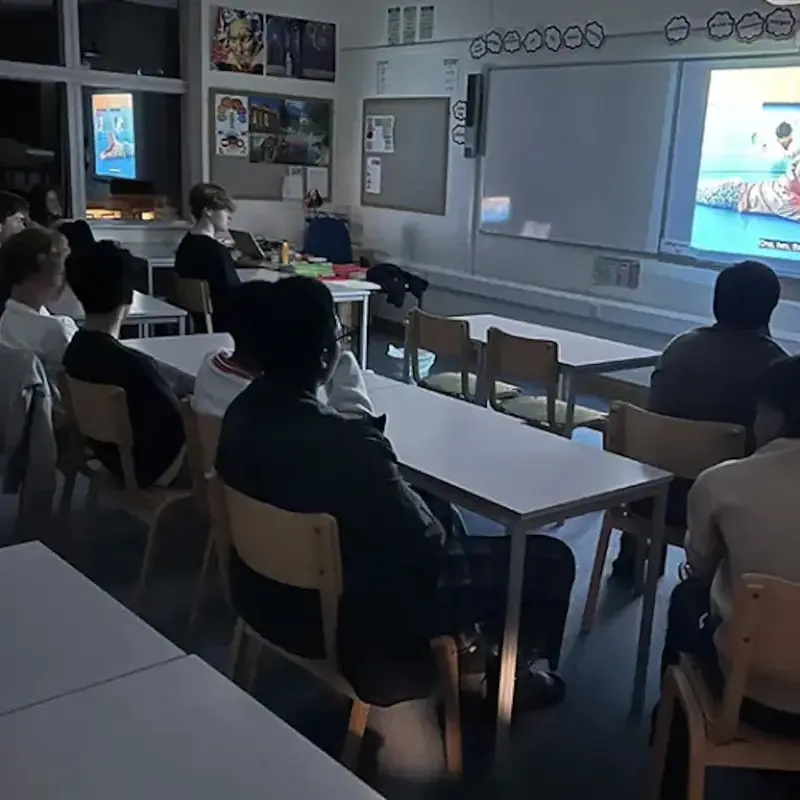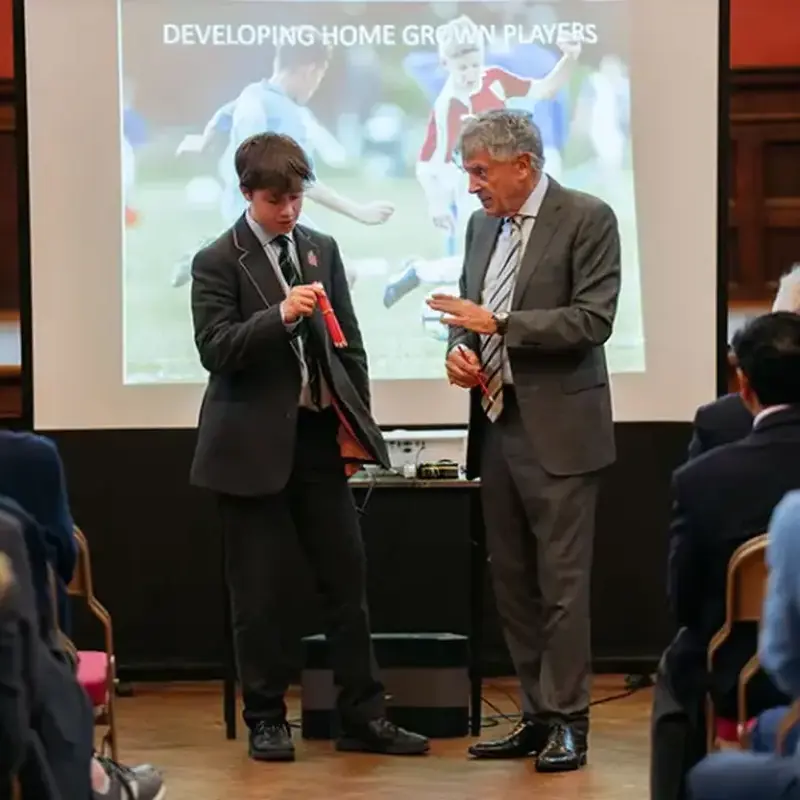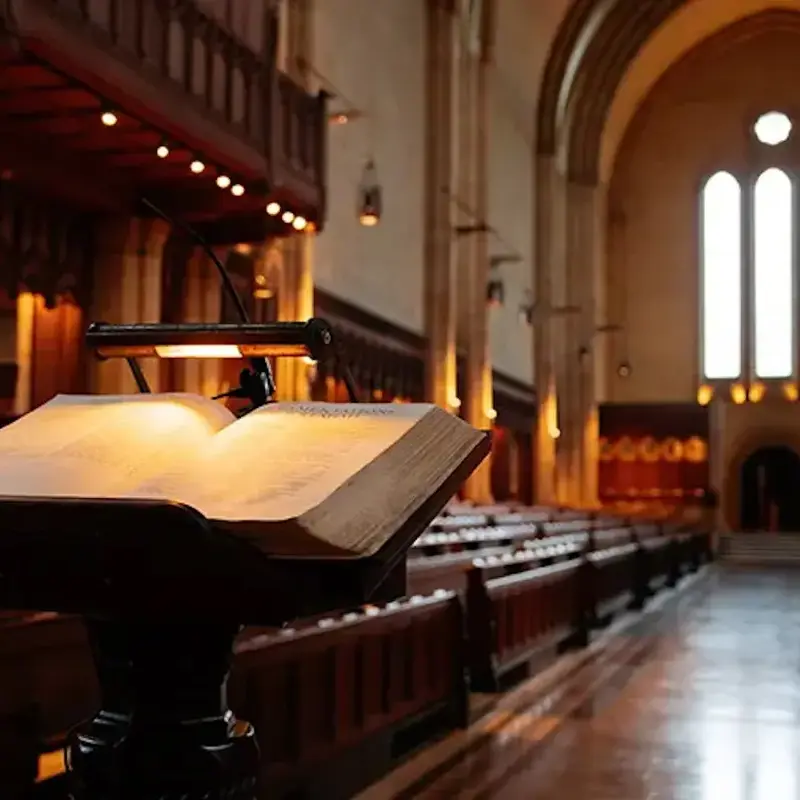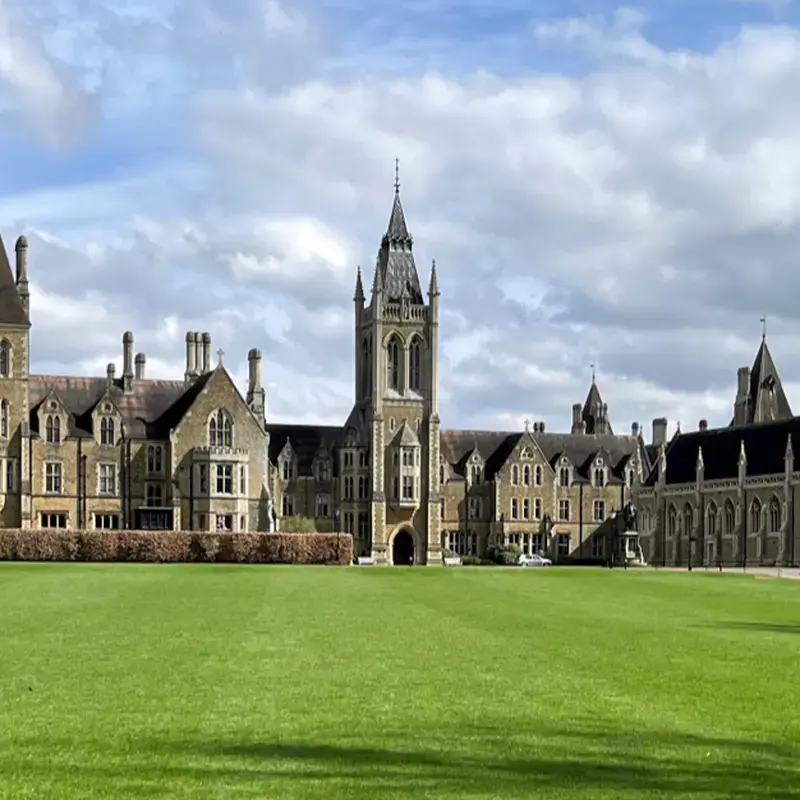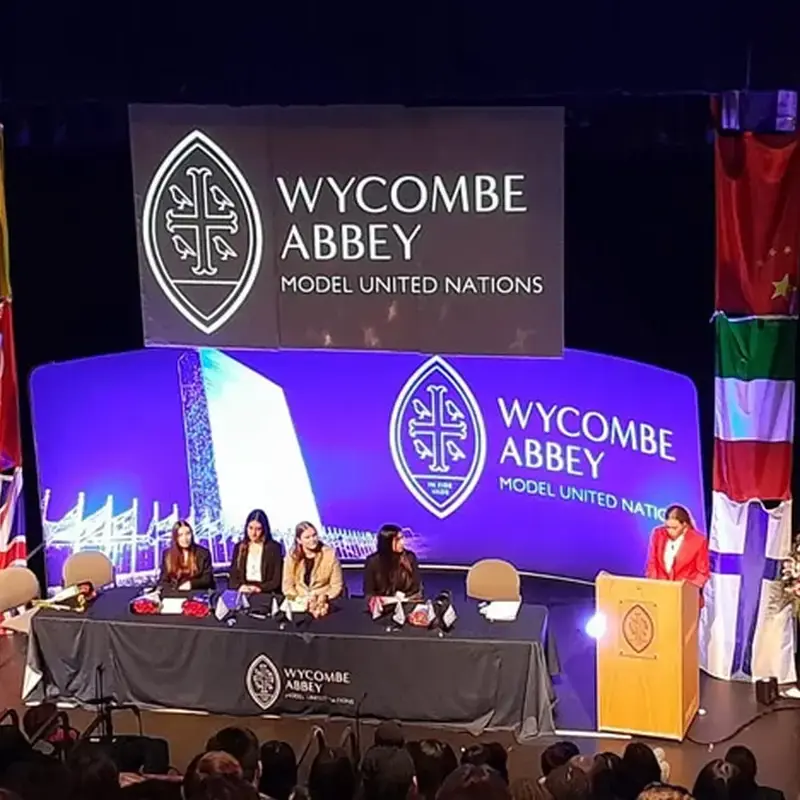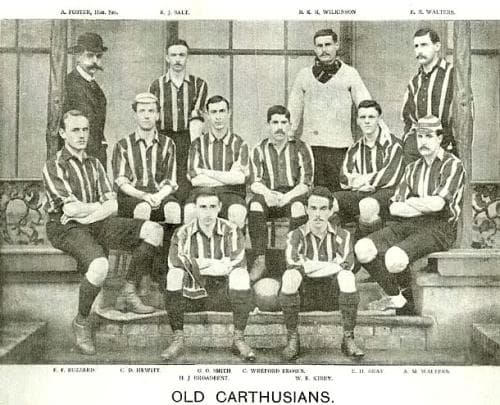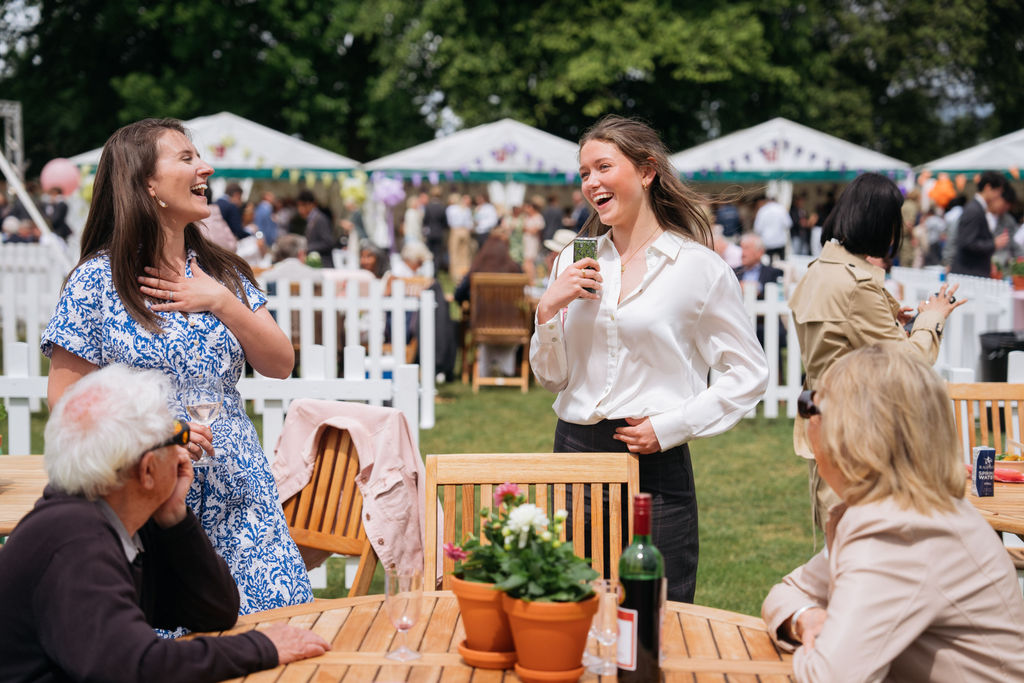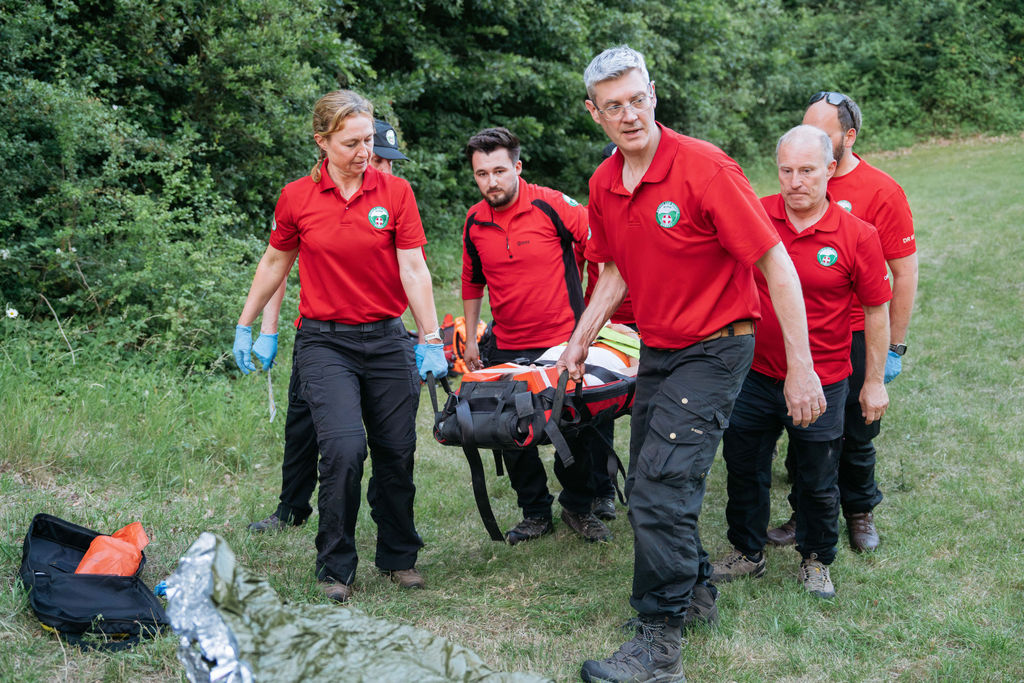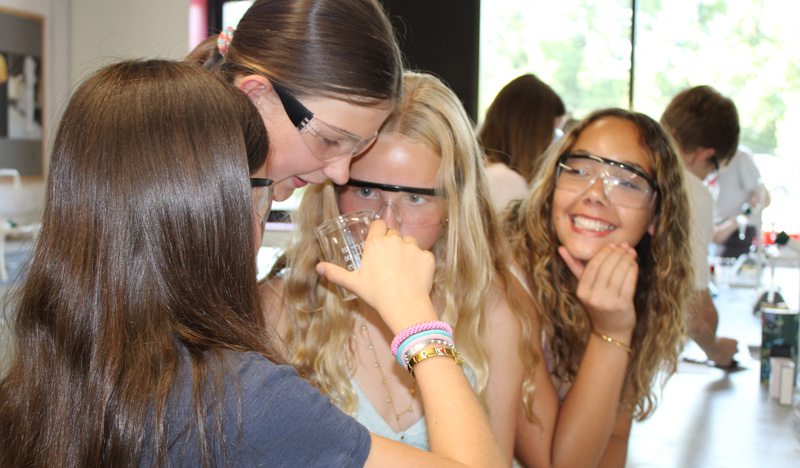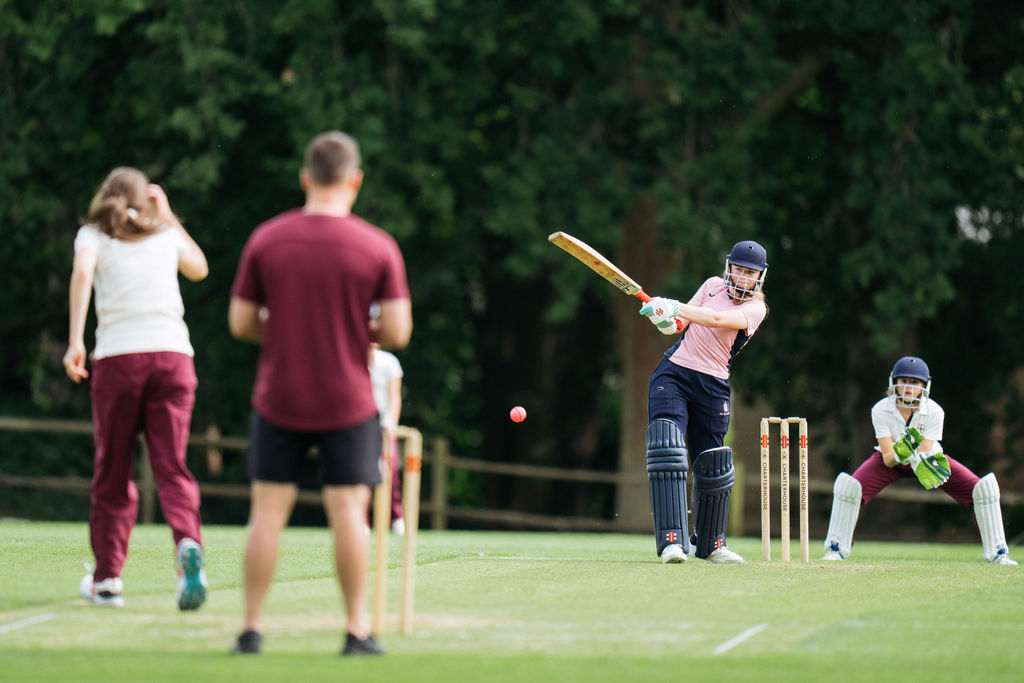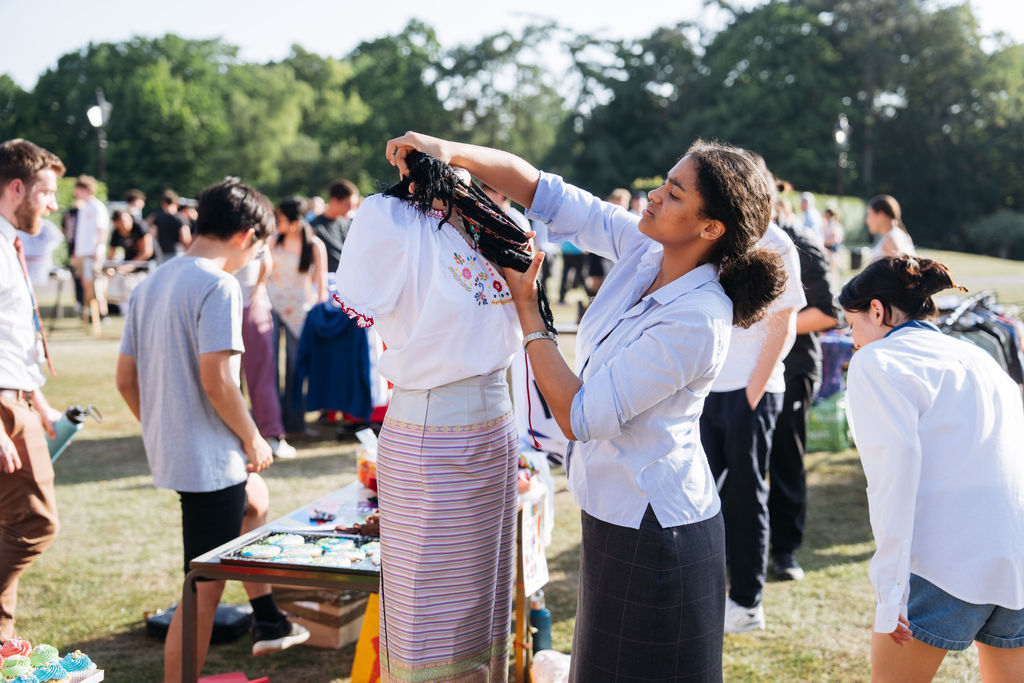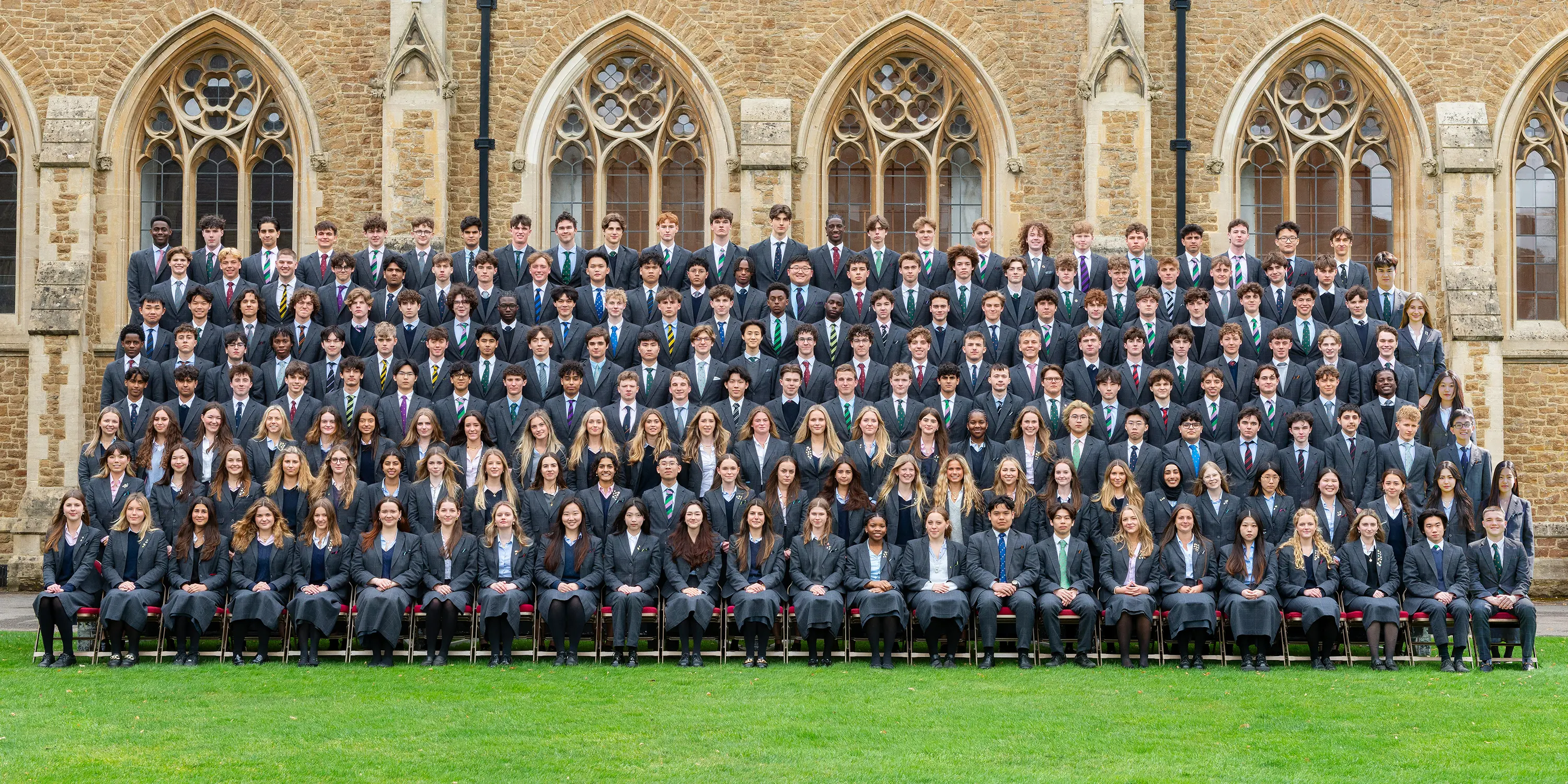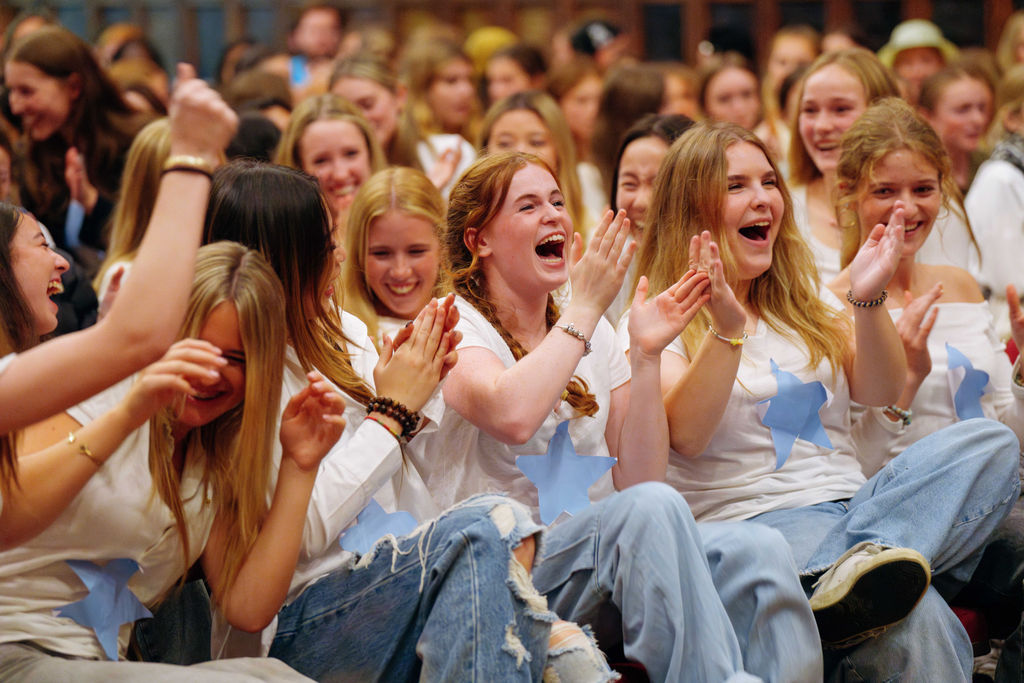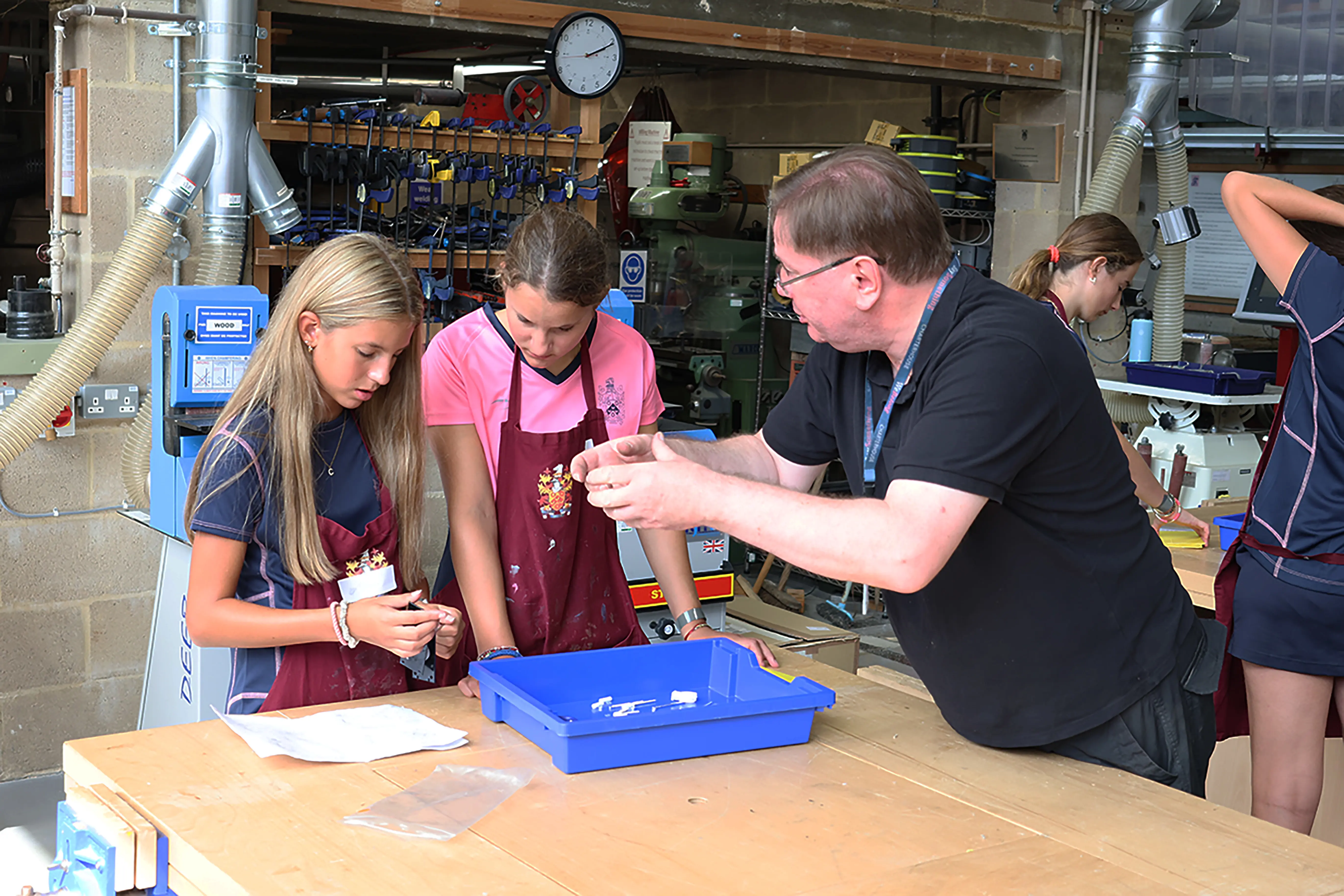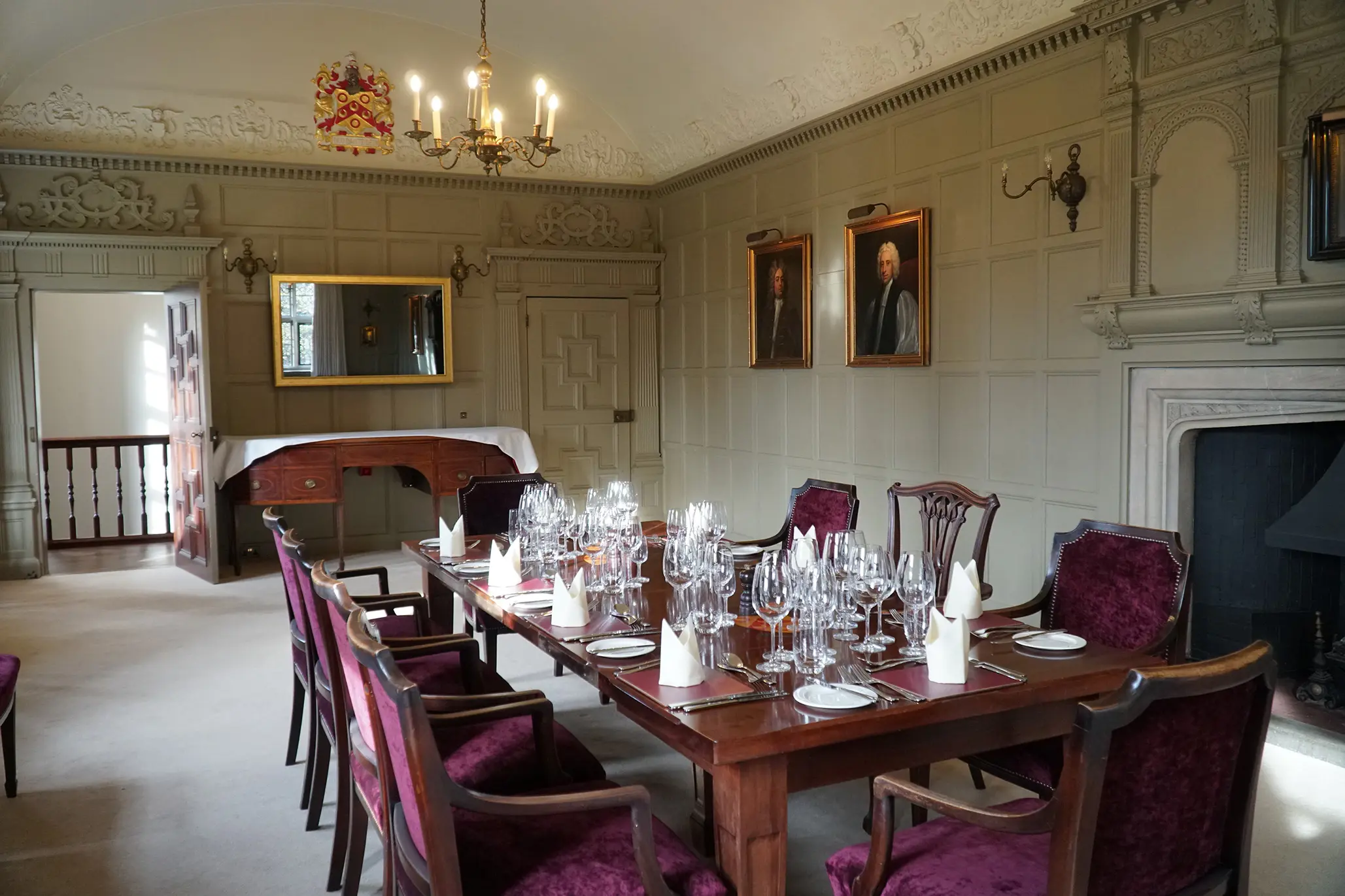Football's History: is Our History
From Cloisters to Cup Finals by Malcolm Bailey
21 July 2025
Charterhouse invented football. Well, not quite... but the story of Association Rules Football is directly and closely entwined with our own.
At the original Charterhouse in London, football was a lively “mob” game, played outdoors by as many boys as wished to join. Known as “runabout”, it celebrated the art of dribbling and fast movement with the ball. Indoors, however, a more intense version took place in the Cloisters. Here, two teams battled to push the ball towards doors at either end of a long, stone corridor – a game of strength, speed and no small risk to limbs.
When the School moved to Godalming in 1872, the wide, open grounds gave new life to runabout, while the cloister game gradually faded. It was here that the Charterhouse style of football – quick, skilful, dribbling-focused – took root and grew, influencing the evolution of the modern game.
The first record of 1st XI football at Charterhouse dates to 1862. At that time, teams played both cloister football and a version of eleven-a-side outdoors. Early fixtures were mostly internal, such as Choir vs The 22, but they soon welcomed external opposition, including sides from neighbouring institutions like St Bartholomew’s Hospital.
In 1863, Charterhouse captain B.F. Hartshorne attended the founding meeting of the Football Association at the Freemasons’ Tavern. It was here that the original 13 rules of football were agreed. It is believed that two of these rules – Rule 5 (the throw-in) and Rule 6 (the offside rule) – were directly inspired by the Charterhouse game. Although the School declined to join the newly formed FA, it continued to shape the sport. Charterhouse football remained one of the most successful and admired styles of the 19th century.
Charles Wreford-Brown, an Old Carthusian and England international, is even said to have coined the term 'soccer'.
FROM CLOISTERS TO CUP FINALS, MALCOLM BAILEY

By the time the School had settled into its new home, Charterhouse football was flourishing. Visiting teams came to Godalming to experience the distinctive, flowing style played on fast, sandy pitches. In 1881, the Old Carthusians lifted the FA Cup, defeating the Old Etonians 3–0 in what would be the last all-amateur final. James Prinsep, one of the side, held two long-standing records: youngest FA Cup finalist and youngest England international – both unbroken until the 2000s.
As the professional game developed, particularly in the North, the gap between amateur and professional teams grew. Yet the Old Carthusians remained competitive, playing against clubs like Blackburn Rovers and Tottenham Hotspur. In 1893, the FA Amateur Cup was introduced, and the OCs won the very first final. They went on to win again in 1897 and finish runners-up in 1895. That year, the OC side, preparing to face Preston North End, featured four England internationals: G.O. Smith, brothers A.M. and P.M. Walters, and C. Wreford-Brown.
By the turn of the century, open amateur clubs began to dominate the FA Amateur Cup. In response, Arthur Dunn – an Old Etonian – founded a competition just for former schoolboy players: the Arthur Dunn Cup. The Old Carthusians appeared in the first final in 1903, sharing the trophy with the Old Salopians after a replay. With only ten minutes of extra time allowed – both teams were expected at the Café Royal for a celebratory dinner – they agreed to share the honours. Since then, the OCFC has won the Arthur Dunn Cup 21 times.
During the First World War, nearly a thousand Carthusians lost their lives. In 1914, several Old Carthusians touring South America with the Corinthians heard of the outbreak of war while docked in Brazil. They immediately returned home to enlist. Many were later decorated for bravery but did not survive. Among them was Thomas S. Rowlandson, a former 1st XI goalkeeper who also played for Cambridge, Sunderland and the England amateur team. He died on the Somme in 1916, “on the parapet of a German trench ahead of his men”.
In the 1920s, three Old Carthusians – Alfred G. Bower, Basil C.A. Patchitt and John S.F. Morrison – played for the Corinthians and England. Both Bower and Patchitt captained the national side, while Morrison earned his amateur cap in 1920.
After the Second World War, professional football dominated the national scene, but the amateur spirit endured. John Tanner, another Old Carthusian, played for Huddersfield Town and Pegasus FC – the legendary Oxbridge side that lit up the 1950s. He was the School’s last international cap and went on to serve with distinction on the FA Council. Around the same time, David Miller – later a renowned sports journalist – narrowly missed selection for the 1956 Olympic team
For those wishing to delve deeper into this rich history, From Cloisters to Cup Finals by Malcolm Bailey (JGJ Publishing, 2009) is available from the School Shop. |
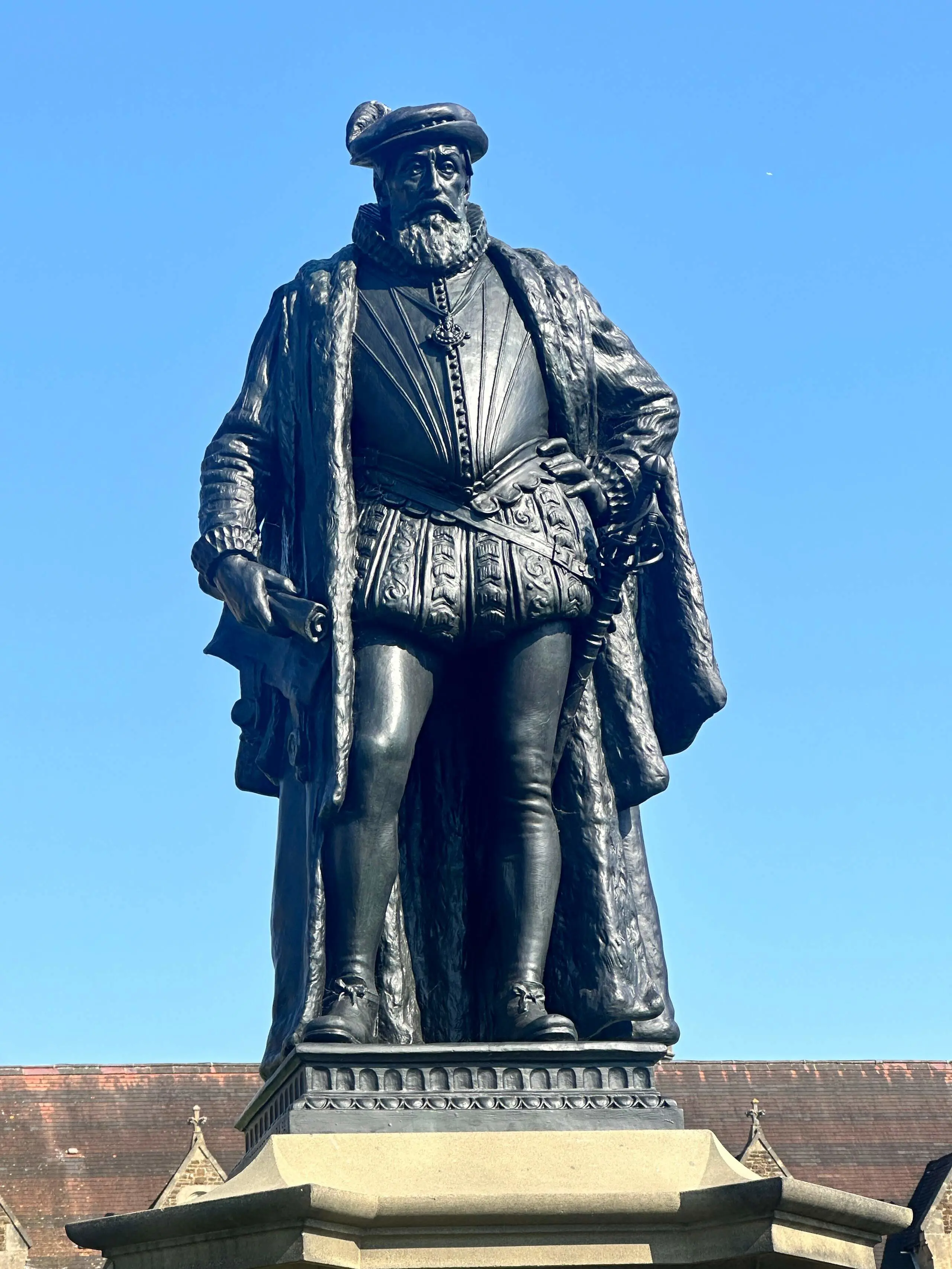 |

